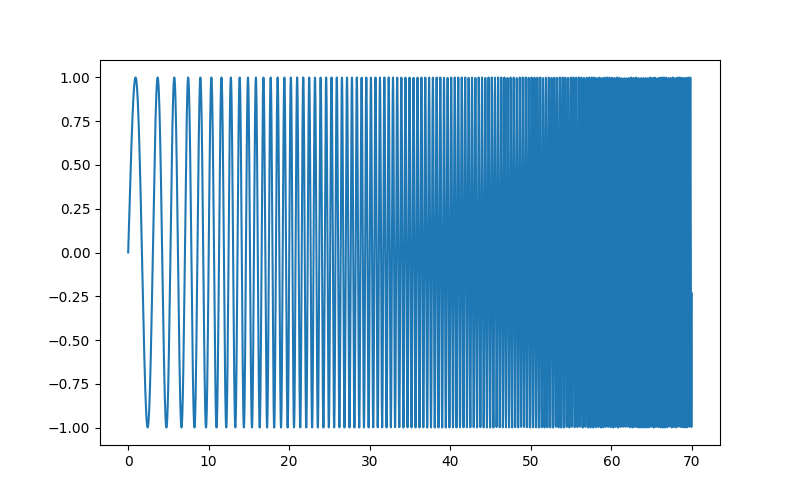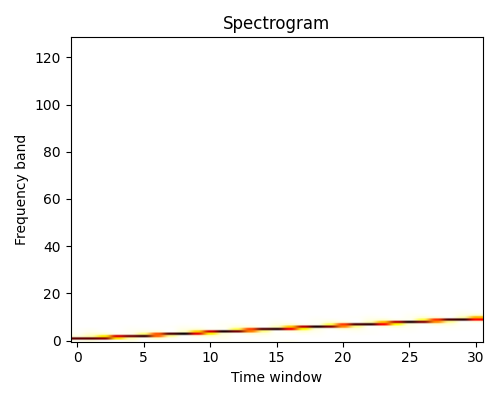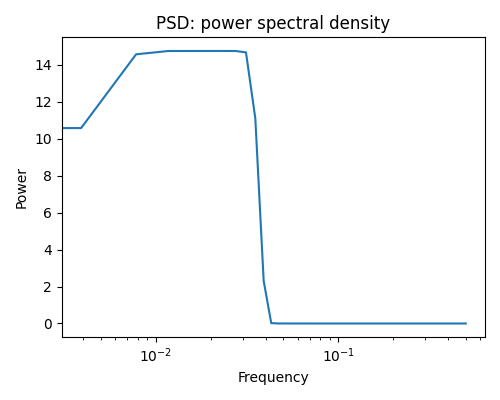Note
Go to the end to download the full example code.
1.5.12.9. Spectrogram, power spectral density¶
Demo spectrogram and power spectral density on a frequency chirp.
import numpy as np
import matplotlib.pyplot as plt
Generate a chirp signal¶

[<matplotlib.lines.Line2D object at 0x7f3b2bc2c050>]
Compute and plot the spectrogram¶
The spectrum of the signal on consecutive time windows
import scipy as sp
freqs, times, spectrogram = sp.signal.spectrogram(sig)
plt.figure(figsize=(5, 4))
plt.imshow(spectrogram, aspect="auto", cmap="hot_r", origin="lower")
plt.title("Spectrogram")
plt.ylabel("Frequency band")
plt.xlabel("Time window")
plt.tight_layout()

Compute and plot the power spectral density (PSD)¶
The power of the signal per frequency band
freqs, psd = sp.signal.welch(sig)
plt.figure(figsize=(5, 4))
plt.semilogx(freqs, psd)
plt.title("PSD: power spectral density")
plt.xlabel("Frequency")
plt.ylabel("Power")
plt.tight_layout()

plt.show()
Total running time of the script: (0 minutes 0.327 seconds)